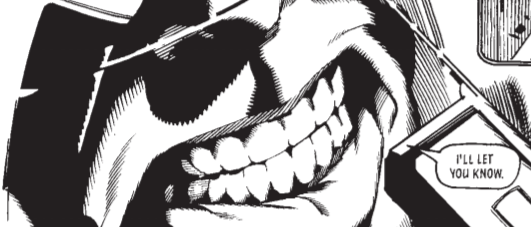(3) SF: MAD MAX
(1979-2024: MAD MAX 1-5 – yeah, I’m counting Furiosa as a fifth Mad Max film)
And now for some classic Australian post-apocalyptic cinema – let’s face it, Mad Max defined the post-apocalypse or at least post-apocalyptic chic, the apunkalypse or biker leather with a bit of BDSM kink thrown into the mix. (Hmmm…maybe a LOT of BDSM kink).
The only issue is which Mad Max film to choose? The correct answer is, of course, all of them – yes, the whole franchise. Even Thunderdome. Even Furiosa as “a Mad Max saga”. They all have something to offer the post-apocalyptic genre, particularly as the apocalypse shifts somewhat in each one.
Although overshadowed by its immediate sequel (so much so that the American audience was generally unaware that there was prior movie and the movie was instead titled The Road Warrior), the first Mad Max is arguably the purest of the films. Part of the latter is that it was shot on a shoestring budget – so much so that director George Miller paid extras in beer.
However, it is not purely a post-apocalyptic film – it also combines elements of ‘buddy cop’ movies and revenge movies, falling squarely within the so-called Ozploitation subgenre of contemporary films at that time (the Australian or ‘Oz’ version of exploitation films). Indeed, these elements predominate in the film – Max Rockatansky or Max is mad because a biker gang, led by Toecutter, burnt his cop buddy ‘Goose’ as well as running down his wife and infant child.
Oh the apocalypse is there somewhere in the background, but it has happened offscreen. Something has caused central governmental authority to decline, but it is still present in Max’s police highway patrol. What’s more – life and society are still relatively intact in the Australian country towns, and there’s even commercial traffic on the roads. This apocalypse reminds me of the proverbial decline and fall of the Roman Empire – too few legions and too many barbarians, the latter represented by the biker gangs emerging in the towns. Indeed, the parallel to the Roman Empire is even closer – just as the legions themselves were increasingly comprised by barbarian Germans, the police force in Mad Max resembles the leather-clad biker gangs. When the highway patrol arrests one of the bikers, the biker even has the mainstay of cop movies, a sleazy defense lawyer, show up and get him out. I mean, come on – what self-respecting post-apocalyptic world has lawyers?! Man, lawyers – they’re hardier than cockroaches! I might have to revise my post-apocalyptic job criteria…
It’s in the second film with the higher budget that the post-apocalyptic scene really gets into gear. And how – the opening narration speaks of oil running out and global (presumably nuclear) war. Long gone is the highway patrol – Max is now a lone survivor, albeit still in his iconic police super-charged V8 Pursuit Special. The plot revolves around an island of semi-barbarized civilization in the form of an oil refinery in an armed compound, besieged by the barbarian marauders. And what intriguing marauders in their leather bondage gear – led by the masked Lord Humungus (“the warrior of the wasteland, the ayatollah of rock-and-rollah” as he is announced) and his lieutenant Wez in those ass-less chaps.
The third film sees the last semblance of former civilization replaced by the barbarian Bartertown and its Thunderdome, ruled by an uneasy diumvirate of Aunty Entity and Master Blaster (although the latter is actually two people).
Personally, however, I can’t go past the visual splendor of the fourth film, Mad Max: Fury Road, which resets the apocalyptic story back to somewhere about the time of the second movie. Indeed, it probably works best as a retelling of the second film, but ramped up to eleven – the fourth film makes the apocalypse in the second film look positively cosy, while Immortan Joe and his War Boys makes the Lord Humungus and his retinue look like a polite picnic party. The plot, characterization and dialogue are all pared down, but who needs them when the film is this visually spectacular? John Keats basically wrote the plot in His Ode on a Grecian Urn:
“What men or gods are these? What maidens loath?
What mad pursuit? What struggle to escape?
What pipes & timbrels? What wild ecstasy?”
Basically, that is, if Keats were to replace pipes and timbrels with flame-throwing electric guitar – and wild ecstasy with balls to the wall insanity. As I’m sure he would if he saw Mad Max Fury Road. Ode on a Fury Road, perhaps?
Furiosa is Miller’s belated return to the world of Fury Road with the prequel story of Imperator Furiosa, which sadly underperformed at the box office – despite Chris Hemsworth’s memorable addition to the Mad Max rogues gallery with the warlord Dementus.
FANTASY OR SF?
SF obviously – and the cinematic trope codifier for that SF subgenre we’ve all come to know and love, post-apocalyptic SF. Although it would be intriguing to see more post-apocalyptic fantasy – I’ve read books that are arguably literary post-apocalyptic fantasy but you just don’t see it in film (or at least, very little of it).
HORROR
Mad Max is not horror as such, although it arguably has elements of slasher and survival horror, not to mention the sheer existential horror of a post-apocalyptic world and the occasional body horror of the ravages of the wasteland on its warlords. As such, it wouldn’t take too much to switch it up for horror.
RATING: 5 STARS*****
S-TIER (GOD TIER)











